- Home
- Trapping Rats
- Facts About Rats
Facts About Rats
This post may contain affiliate links so I earn a commission.
Understanding these important facts about rats will help you accomplish two things.
First, you will be able to locate the signs and damage left behind by rats and second you'll be able to identify which type of rat is causing the issues.
Lets face it, no one wants a rat living in their attic, walls or basement of their home.
However, once a rats enters your home it's not going to leave on its own.
In fact, once a rat enters your house it leaves behind a trail of scents and smells that actually lures more rats inside.
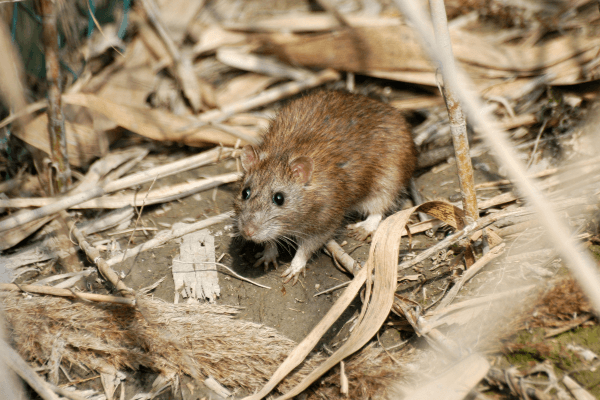
So, in order to protect your home and remove these unwanted pests it's important to quickly identify which type of rat you're dealing with and remove them using the best way possible.....traps.
That's right, trapping rats is the best way to remove them from your home.
It's fast, effective and easy once you seal off their access points and prevent additional rats from coming inside.
Poisons are simply too dangerous, glue boards or cruel and don't work, and various repellents and ultrasonic noise machines are a waste of money.
In order to successfully trap the rats, you must have a good idea which type of rat is coming into your home.
This will help you understand where to place your traps and how to prevent future rats from becoming an issue.
The two most common rats in the United States are the Norway rat, also called the brown rat, and the roof rat, also called the black rat.
To better understand the differences between these rats, lets look at them a little closer.
Facts About Rats - Norway Rat or Brown Rat
Norway rats are the most common type of rat found throughout the United States.
Also called the brown rat, street rat, common rat or sewer rat, the Norway rat is a brown or gray rodent that measures 7-10 inches long with a tail that's slightly shorter than the length of its body.
The Norway rat can weigh nearly twice as much as a roof rat and be many times larger than the common mouse.
With an average weight of about 11 ounces, Norway rats have acute hearing and a great sense of smell.
However, their eye sight is very poor.
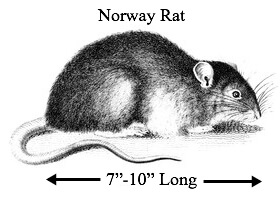
The Norway rat is an omnivore that will consume almost anything it can find.
Although cereals or grains make up a large part of their diet, fish, sparrows or even ducks will be hunted and killed.
If the conditions are favorable, the rat can breed throughout the year producing up to 5 litters.
Norway rats live in large, hierarchal groups with a distinct social order creating dominance of one rat over another within the group.
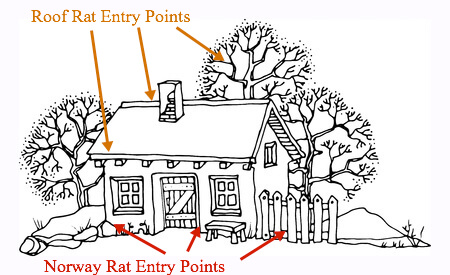
Norway rats nest in lower elevations such as burrows in the soil, basements and sewers.
If you're finding damage to the lower portion of your home, or around the homes foundation, there's a good chance you're dealing with a Norway rat.
This is different than roof rats that nest in higher elevations such as your eves, roofline or ridge vents.
Also, their dropping are roughly 3/4'' long with blunt ends, compared to the droppings of roof rats which are roughly 1/2'' long with pointed ends.
Facts About Rats - Roof Rat or Black Rat
When considering facts about rats, it's important to understand that roof rats are not as common as Norway rats.
They're typically found within 100 miles of the gulf coastline or the coastline of the western United States.
Also called the black rat, ship rat or old English rat, the roof rat measures 6-8 inches long and has a tail that's slightly longer than its body.
With an average weight of 4-11 ounces, the roof rat is much smaller than the Norway rat.
Also, despite the common name of black rat, their fur can exhibit several color forms from black to brown with a lighter underside.
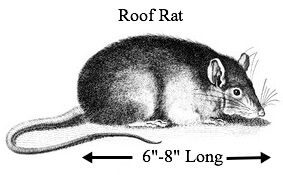
Roof rats are omnivores that eat many different foods including seeds, nuts, fruits and a variety of vertebrates and invertebrates.
They are an exceptional nuisance to farmers because they eat a variety of agricultural based crops like sugar cane, grains and cereals.
Roof rats prefer to live in dry, upper levels of buildings.
They are commonly found in wall cavities or false ceilings.
In the wild they love to climb trees and will build nests in the trees, cliffs or elevated rocks.
Roof rats seem to prefer the canopy of palm trees, especially dead palm fronds.
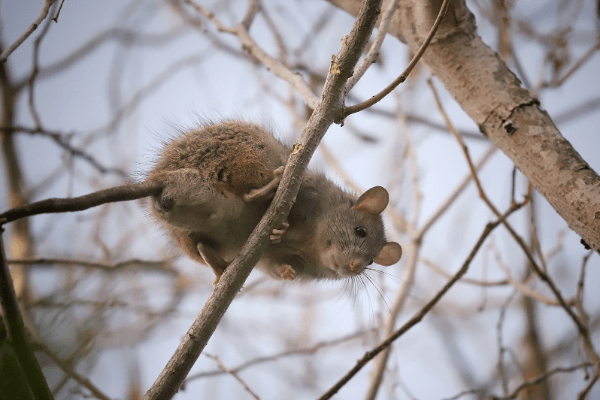
Look for damage around your eves, roofline or ridge vents.
Prune back tree limbs which are adjacent to your home to help prevent roof rats from climbing the tree and accessing your roofline.
Overall - Facts About Rats
Understanding these basic, yet important facts about rats will help you identify where the rats are entering your home and more importantly, which type of rat is causing the damage.
Once you locate the area where the rats are coming into your house, seal off the entry points using metal flashing.
Once sealed off you can focus on trapping the rats and eliminating the problem for good.



